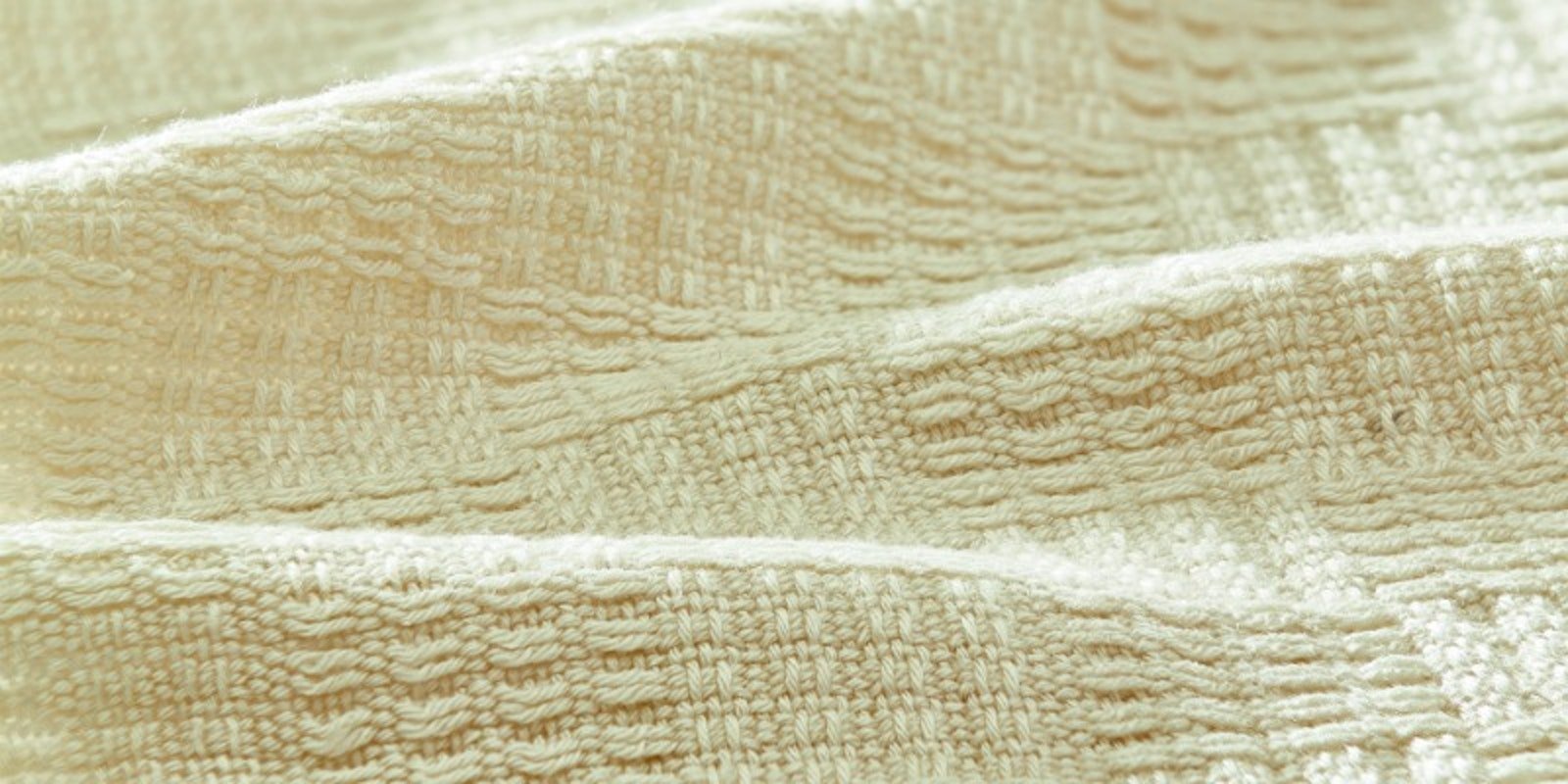Milk fiber is a relatively new fiber with a lot of potential. In her Yarn Lab in the November/December 2017 issue ofHandwoven_ weaver Liz Moncrief wove up some samples using this lovely silk-like yarn. —Christina_
Milk or casein fiber shimmers like silk. Also like silk, it takes both acid and fiber-reactive dyes, but the colors don’t fade—even after wear and repeated machine washing.
Invented in Italy in the 1930s, the process for manufacturing milk fiber is similar to the lyocell process for producing viscose rayon from plant pulp. The fiber is made from dairy milk, and it takes about 12 gallons of milk to make a pound of fiber. Because the casein (milk protein) is extracted from dehydrated milk solids, mills can use waste milk that is spoiled or contaminated and not fit for consumption. The milk is first dewatered, and the casein is dissolved in an alkali solution. The solution is extruded through a very fine spinneret into a bath that neutralizes the alkali and blends the casein with acrylonitrile to produce the strong, fine fibers that can be spun into thread or yarn. The process has been certified green under the Oeko-Tex Standard 100 for international textiles, meaning that the manufacturing process and the resulting fibers are environmentally benign and not harmful to wearers. It is machine washable, so it’s great for baby blankets, baby clothes, and light summer wear. The fabrics breathe well and wick moisture. In knitting, the yarn has no memory so fabrics may grow a bit, but this isn’t usually an issue for weavers.
[envira-gallery slug="milkyarn"]
Block Twill
SAMPLE YARNS: Warp and weft: Milk Yarn (natural). I started at 24 ends per inch (epi) for this block twill. As stated above, the yarn does not have memory, yet I don’t think that it will stretch with wear if your sett is appropriate. This turned twill sets off the gloss well. Setts: 24 epi; 24 ppi. Dimensions: Width on the loom: 5"; Width after wet-finishing: 4.5"; Draw-in and shrinkage: 10%; Woven length on the loom: 10"; Length after wet-finishing: 9"; Take-up and shrinkage: 10%.
Broken Twill
SAMPLE YARNS: Warp and weft: Milk Yarn (natural). At 24 epi and using the same threading, I treadled broken twill, which gives the impression of using a light-gray weft yarn, though it is still the same natural-colored yarn. Setts: 24 epi; 24 ppi. Dimensions: Width on the loom: 5"; width after wet-finishing: 4.75"; draw-in and shrinkage: 5%. Woven length on the loom: 11"; length after wet-finishing: 10"; take-up and shrinkage: 10%.
Ms and Os
SAMPLE YARNS: Warp and weft: Milk Yarn (natural). I reduced the sett to 20 epi, as for tabby, and wove Ms and Os. A sett of 20 epi gives a firm and balanced tabby weave with this draft. Setts: 20 epi; 20 ppi. Dimensions: Width on the loom: 5"; width after wet-finishing: 4.5"; draw-in and shrinkage: 10%. Woven length on the loom: 12"; length after wet-finishing: 10.75"; take-up and shrinkage: 11%.
Swedish Lace
SAMPLE YARNS: Warp and weft: Milk Yarn (natural). I sett the yarn at 16 epi and then decided to see how this yarn would accept a lace draft and was very pleased with this Swedish lace sample. Setts: 16 epi; 16 ppi. Dimensions: Width on the loom: 7.5"; width after wet-finishing: 7"; draw-in and shrinkage: 7%. Woven length on the loom: 9.5"; length after wet-finishing: 9"; take-up and shrinkage: 7%.
Liz's dyed samples of the milk yarn.
FINAL NOTES
I think this yarn is best used for a fashion scarf or shawl. I also tested the yarn in the dye process and was delighted with the results, which you can see in the samples. The teal and purple were dyed using protein dyes in an acid bath with heat; the green and gold were dyed using fiber-reactive dyes in an alkaline bath and set to cure for 20 hours. All skeins took the dyes fully with very little washout and no crocking or flaking. Bellatrista is anticipating production of some finer-diameter yarns in the 28 to 30 epi range; in the meantime, you should try this extraordinary yarn now. I predict that you’ll be in love with it, as I am.
—Liz Moncrief


